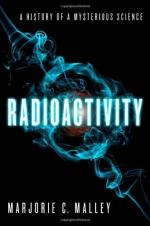|
This section contains 510 words (approx. 2 pages at 300 words per page) |

|
Radioactive decay is the process in which an atom emits another particle or particles. A radioactive element exhibits fewer decays per unit of time at an exponential rate. The half-life is how long it takes the element to decay to half its original concentration. This process obeys the known conservation laws, including conservation of mass number at low energy.
Radioactive elements can be found naturally (as in radium or uranium) or artificially created in a laboratory. Pierre and Marie Curie and Antoine-Henri Becquerel were among the first to study naturally occurring radioactivity, in substances such as uranium, radium, thorium, and polonium. They jointly won the Nobel Prize in 1903 for studying spontaneous radioactivity. In 1934, Pierre Joliot and Irene Joliot-Curie were the first to induce radioactivity by bombarding a sheet of aluminum to produce a radioactive isotope of phosphorus.
There are several kinds of radioactive decay. They are...
|
This section contains 510 words (approx. 2 pages at 300 words per page) |

|


